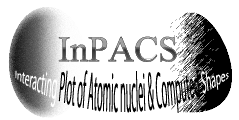Seminar (セミナー)2024.10.24 Pierre Arthuis (IJC lab)
2024年10月18日 | 新着情報
The following two seminars will be held on October 24, 2024, at Meeting Room B in Center for Computational Sciences, University of Tsukuba, starting from 16:00 pm.
Speaker: Michal Repisky
Affiliation: Laboratoire des Deux Infinis Irène Joliot-Curie, CNRS, France
Title: Neutron-rich nuclei and neutron skins from chiral low-resolution interactions
Abstract: The quest for an ab initio description of atomic nuclei has benefited recently from a lot of progress in the development of chiral interactions, allowing for predictions to span the nuclear chart up to 208Pb. Still, an accurate description of all nuclear structure properties on the basis of one single interaction remains out of reach to this day. In this talk, we will introduce two low-resolution chiral interactions recently developed for the description of bulk properties of nuclei [1], from ground-state energies to density distributions. In particular, we will discuss how they shade a new light on the neutron skin, that connects finite nuclei to neutron stars and the description of infinite matter.
[1] P. Arthuis, K. Hebeler and A. Schwenk, arXiv:2401.06675 (2024)


